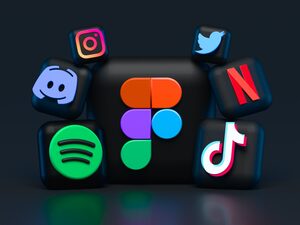Brand Tone Of Voice: How To Create Your Brand’s Personality
Body
When most businesses think about branding, they usually think about the visual elements first. What will my logo look like? What colour will help us stand out from our competitors? These questions are important as visual branding is essential to creating a solid brand. If asked, could your customers accurately describe your brand’s personality, or identify your content without any visual clues?
There’s no shortage of content online. A strong, consistent tone of voice can help you stand out from the crowd and connect with your audience. Customers want to think that they know what values your business stands for before they shop with you.
Today, omnichannel marketing is more than just a buzz word. Customers are following brands on Twitter, searching for their products on Instagram, and checking out these products on custom-built apps. Study’s have shown that creating a cohesive experience across every platform that you ‘speak’ on is also important for creating a strong customer experience.
Creating brand tone guidelines is an important step towards making sure all communications from your business sounds the same.
What is brand tone of voice?
Brand tone of voice is the personality your business takes on in its communications. Creating a brand tone involves defining what adjectives you want to sound like, and what words and phrases you would use or avoid. Establishing the right voice comes down to what type of values you want to portray.
If you have a luxury brand that wants to be perceived as exclusive, you may choose a more formal way of speaking. If your demographic is young females, emojis and pop culture references are going to be a more acceptable way of communicating. Whichever tone you choose, it should reflect your values, and the audience you are trying to reach.
The easiest way to think about brand tone is to think of your brand as a real human. Picturing everything from the clothes they might wear, to the age they are, and their hobbies can help you to imagine their personality — how they then think, feel and act.
It’s likely that your business has some sort of brand tone, but it’s also common that as organisations grow, it’s easy to let the voice of many contributors dilute your brand’s personality if you don’t have any brand guidelines about your voice and tone. If you want to know whether your brand can do more to stand out, book in for a free consultation session with our marketing experts.
Why is brand tone important?
Two words: consistency and connection. Developing a consistent brand tone is important for connecting with your audience. Today, consumers are looking to buy from brands that they can get behind. They care about more than just a product — the messages you are spreading, and values you uphold are also very important.
According to one study by Sprout Social, “when customers feel connected to brands, more than half of consumers (57%) will increase their spending with that brand and 76% will buy from them over a competitor.”
Establishing a solid brand tone will also help your audience easily identify you, attract like-minded customers who care about what you care about, and position your as a brand to watch in your industry.
Your brand tone can also help you stand out from your competitors, and ultimately conveys a lot about how your business operates.
Is brand tone different to brand voice?
The two go hand in hand, but there is a difference. Brand voice is more about the message you are delivering — for example, you might spend a lot of time entertaining your audience, or educating them about your content — but brand tone is how you say it. For example the fast-food chain Wendy’s takes a sassy approach to their social media. Since their target market is millennials and young professionals, roasting people on Twitter makes sense for their brand.
Most brands have slightly different tones of voice for each different channel. For example, you might sound more formal in your press releases compared to your social media posts, and emails. Wendy’s website focuses on informing customers about the quality of their food. They deliver the same message in the 2018 Super Bowl advertisement below but use a much sassier tone.
MailChimp does a great job of creating the distinction between brand voice and tone in their Style Guide. “Consider the reader’s state of mind. Are they confused and seeking our help on Twitter? Once you have an idea of their emotional state, you can adjust your tone accordingly.”
Even if your brand is edgy and informal, customers that are having problems with checking out on your site want you to be helpful. Adjusting your tone slightly for each channel will make sure customers feel listened to, without your brand losing any of its personality.
What are brand voice and tone guidelines?
Brand voice and tone guidelines are a way of committing your brands personality to paper and letting your internal staff know what is expected of them when it comes to using your brand’s voice. Businesses today need many touchpoints to stay visible with customers. From emails, to printed brochures, to your website and social media, your brand should have a consistent way of speaking to your customers across all channels.
Brand tonality guidelines usually also more than just your tone of voice. They also include:
- Brand story
- Brand values
- Brand mission
- Brand messaging
- Brand voice and tone
- Brand positioning
- Audience personas
- Competitor research
- And finally, your brand identity.
How do I develop my brand voice and tone guidelines?
The most comprehensive way to develop brand tonality guidelines is to work with an agency that specialises in creating them. At Ambitious Digital Agency NZ, we’re experts in developing brand tonality guidelines that help our clients differentiate themselves from their competitors whilst tapping their authentic brand values. To learn more about working with us, you can contact us for a free consultation here.
If you’re not looking to develop your brand tonality guidelines with a professional yet, here are our tips to developing your tone of voice and brand personality on your own.
Collate all the examples of brand voice you have
Your brand probably already has some elements needed in your tonality guidelines report listed above. Many companies will have audience personas, a brand mission and brand values. Pull what you have together into one document. This will be the start of your brand tonality guidelines. This document will be the ‘bible’ of your company and once it’s completed you can give a copy to every member of staff so they know what to expect.
Analyse your content
Take an audit of your current communications. Grab examples of lots of different types of media that your business has published — everything from tweets, to press releases, to email templates, and brochures.
Take note of what documents sound the same and how you feel about them. Do the ‘funny’ tweets get the most engagement and ultimately feel like your brand? Start a brainstorm of the common personality traits that you find accross your content. Beside each one say whether you want to keep these personality traits, or whether you want to discard them.
Remember your audience
Another way to establish a brand tone is to analyse your audience. If you don’t yet have marketing personas, spend some time creating profiles of your audience. These can include the age, gender, education, location, pain points, and hobbies of your customers.
As you get a clear picture of your audience, list out adjectives that you might associate with them. The ultimate goal is to refine your brand tone and to develop a voice that is authentic to your company’s values. Consumers, especially young people, can spot marketing that tries too hard from a mile off.
Create a persona for yourself
Just like you did for your audience, creating a persona for your own brand can be helpful. Are you an environmental charity? Taking on the personality of a ‘friendly ranger’ might be a great fit for your brand. Your personality traits could include being approachable, knowledgable, non-judgemental, and passionate about the environment. See what persons fit with the adjectives you came up with in your brainstorm.
How do I use my brand voice and tone guidelines?
Brand tone guidelines are essential for every person in your business to read and understand. But to get the most out of this document you are also going to want to add in brand messaging and your brand story.
At Ambitious Digital, our Brand Tonality Guidelines are designed to help businesses understand their brand voice and tone, as well as the stories and messaging that will set them apart. We can work with you to develop a brand story that tells your audience what you do, how you do it, and why you’re in business.
With these elements combined, you will have a foundation for your brand to connect with your audience, attract like-minded people, and stand out from your competition.
Source URL: https://ambitious.nz/branding/brand-tone-of-voice-how-to-create-your-brands-personality/













Comments